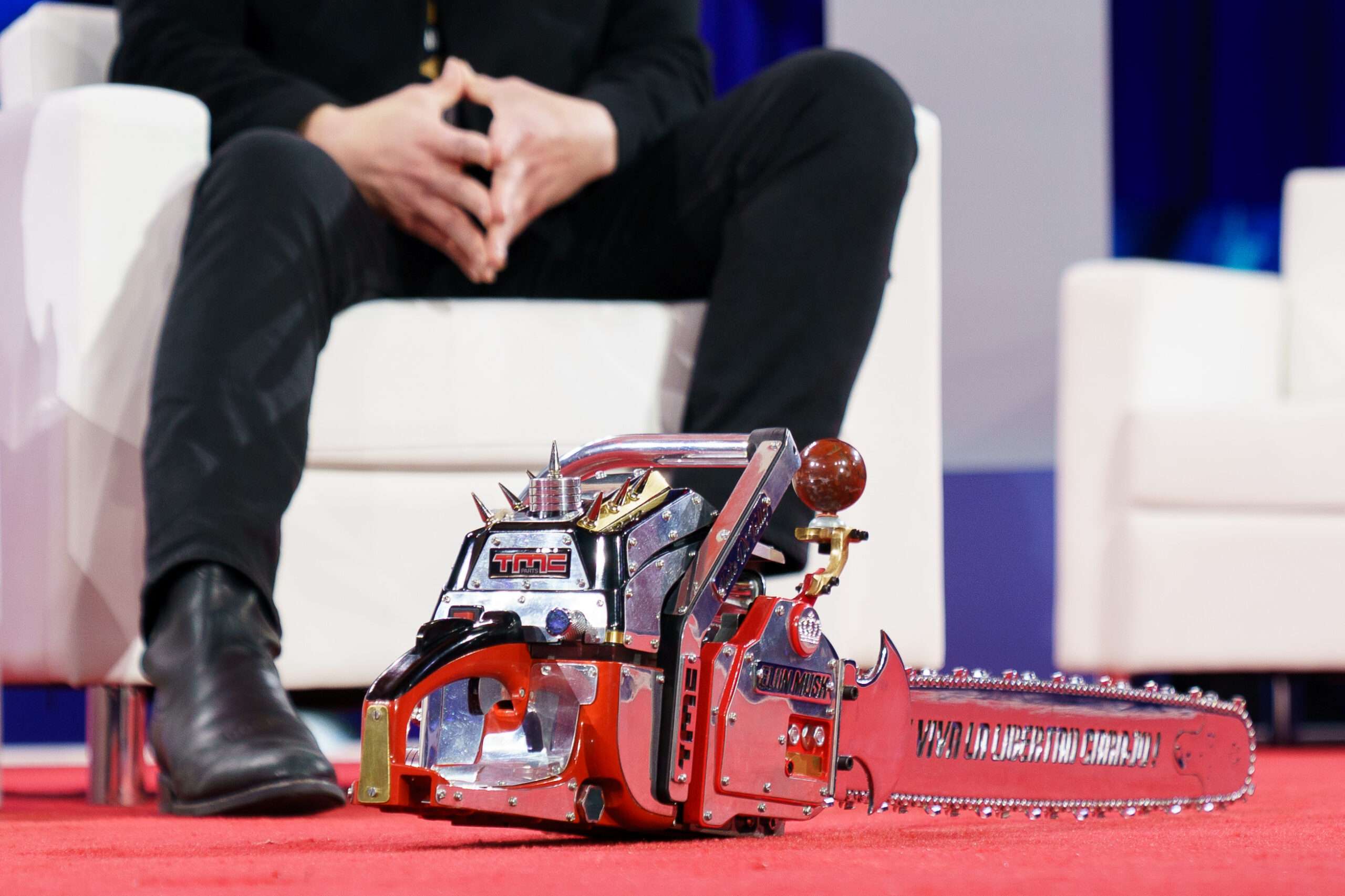Elon Musk, the billionaire CEO of Tesla, SpaceX, and X (formerly Twitter), has long positioned himself as a fierce critic of government spending. In his typical hyperbolic style, he has promised to “chainsaw” wasteful expenditures, particularly in sectors like aerospace, infrastructure, and subsidies. However, a closer look at Musk’s business empire reveals a more complicated relationship with government funding—one that relies heavily on taxpayer dollars despite his rhetoric.
While Musk portrays himself as a self-made entrepreneur who thrives on free-market capitalism, his companies have benefited enormously from government contracts, grants, and incentives. From NASA contracts keeping SpaceX afloat to electric vehicle (EV) tax credits boosting Tesla sales, Musk’s empire has been propped up by billions in public money. This contradiction raises an important question: Is Musk truly cutting government spending, or is he just trimming around the edges while still cashing in?
The Myth of the Self-Made Billionaire
Musk often downplays the role of government support in his success. In interviews and social media posts, he frames his ventures as triumphs of private innovation over bureaucratic inefficiency. Yet, without government assistance, several of his companies might not exist today.
SpaceX: Built on NASA Contracts
SpaceX, Musk’s aerospace company, is frequently cited as a private-sector success story. But its survival in the early years depended almost entirely on NASA contracts. In 2008, when SpaceX was on the brink of bankruptcy, NASA awarded it a $1.6 billion contract to resupply the International Space Station (ISS). This lifeline saved the company and laid the foundation for its dominance in commercial spaceflight.
Since then, SpaceX has secured billions more in government funding, including a $2.9 billion NASA contract for the lunar lander and lucrative military satellite launches. While Musk boasts about reducing launch costs through private innovation, much of that innovation was bankrolled by taxpayer money.
Tesla: Subsidies and Tax Credits
Tesla, Musk’s electric car company, has similarly benefited from government incentives. In its early days, Tesla relied on a $465 million loan from the U.S. Department of Energy (DOE), which it repaid early—but not before using the funds to scale production. More significantly, Tesla customers have taken advantage of federal EV tax credits, which effectively subsidized Tesla’s sales.
At the state level, Tesla has received additional perks, including tax breaks for Gigafactories in Nevada, Texas, and New York. These incentives, often justified as promoting green energy, have directly boosted Tesla’s profitability.
SolarCity and the Subsidy Game
Musk’s now-defunct SolarCity, a solar panel company, was another major beneficiary of government subsidies. The company thrived on federal and state solar tax credits, which incentivized homeowners to install its panels. When SolarCity faced financial trouble, Tesla acquired it in a controversial $2.6 billion deal—raising questions about whether Musk used Tesla’s resources to bail out another of his struggling ventures.
Musk’s Hypocrisy on Government Spending
Despite his companies’ reliance on public funds, Musk frequently criticizes government spending. He has called for cuts to NASA’s budget, even as SpaceX continues to profit from it. He has mocked public transit projects like California’s high-speed rail while his own ventures (like the Las Vegas Loop) receive government approvals and funding.
His purchase of Twitter (now X) further highlighted this contradiction. After complaining about “woke” government policies, Musk accepted subsidies for Starlink internet service in rural areas—another example of his selective disdain for public funding.
The Reality: A Strategic Trim, Not a Chainsaw
Musk’s rhetoric about slashing government spending is largely performative. In practice, he has not dismantled reliance on public money—he has simply optimized it. By securing contracts, tax breaks, and grants, he has ensured his companies remain competitive while maintaining his image as a libertarian disruptor.
This strategy is not unique to Musk—many corporations lobby for favorable policies while decrying government intervention. But Musk’s case is particularly striking because of his outsized public persona and his insistence that he operates outside the system.
Conclusion: The Musk Paradox
Elon Musk’s relationship with government spending is a paradox. He condemns it in speeches and tweets but depends on it for his businesses. He promises to “chainsaw” waste but settles for strategic trims that leave his own subsidies intact.
This contradiction does not negate his companies’ achievements—SpaceX has revolutionized space travel, and Tesla has accelerated the EV revolution. But it does undermine his anti-government posturing. The truth is, Musk’s empire was built not just on private innovation but on a foundation of public investment.
For all his talk of fiscal conservatism, Musk’s real talent lies in navigating—and benefiting from—the very system he claims to oppose.



